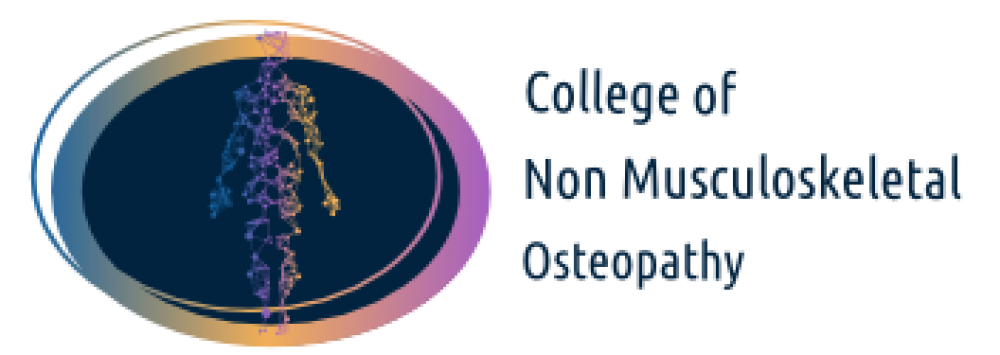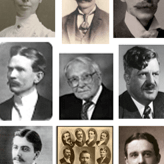Philosophy and Principles in the 21st Century
CURRICULUM OVERVIEW
POST GRADUATE CERTIFICATE IN OSTEOPATHIC CONCEPTS
8 THEORY MODULES, WITH ONLINE RESOURCES, ACCESSED VIA MOODLE, with option to include 5 day practical block
FACULTY TRAINING FOR A NEW PROGRAMME TEACHING OSTEOPATHY! Complete this programme in 2024-2025 to be eligible to apply to teach on an exciting new undergraduate programme planned for 2025-2026!
Content per session:
| MODULE | DATE (take at own pace) | TITLE | INDICATIVE CONTENTS |
| 1A | WHOSE OSTEOPATHY IS IT ANYWAY? | A.T.Still and early players. | |
| 1B | Developing the concepts of lesions and body contributions to health | ||
| 1C | Lesions, posture, neural, fluidic and biomechanical dynamics | ||
| 1D | Current practice – is it osteopathic? | ||
| TUTORIAL ONE | |||
| 2A | FUNCTION AND PHYSIOLOGY | FINDING HEALTH – ‘seeing’ | |
| 2B | Littlejohn’s sensory concepts and equations | ||
| 2C | Hydrostatic skeletons, our coelomic posture, Biotensegrity and cellular level health | ||
| 2D | Axial and appendicular dynamics | ||
| TUTORIAL TWO | |||
| 3A | HOW THINGS MIGHT WORK – OSTEOPATHY AND PATHOLOGY | Communication and barriers – releasing health | |
| 3B | Techniques that communicate or release communicative channels | ||
| 3C | Body impacts on self-regulation | ||
| 3D | Practitioner or patient delivered therapy – the role of touch and passive movements; why we all palate it differently | ||
| TUTORIAL THREE | |||
| 4A | LESION TRACKING – WHAT DOES IT MEAN? AGG-REL AND MAINTAINING FACTORS | Viscero-somatic / somato-visceral, maps, topography, where is the ‘segment’, cutaneous reflexes and nuclei – what is driving what? | |
| 4B | Myofascial ‘lesions’ – what are they? | ||
| 4C | The primary lesion – does it exist | ||
| 4D | Models – still lesion unwinding, Lovett brother, SAT, SOT, Littlejohn’s curves, ilial lesions, global patterns – what is all this stuff – does the number crunching latter? | ||
| TUTORIAL FOUR | |||
| 5A | FOUNDATIONS – RATIONALITY, PLAUSIILITY, DEFENSIBILITY | Is there any evidence? | |
| 5B | Postural models and the BSP debate – where to go with this story | ||
| 5C | Other models – the 5-model model and the Embodied embracing model. Lets think integrated function and physiology | ||
| 5D | Immune dynamics – exposure, allostasis, dysregulation – can bodywork work? | ||
| TUTORIAL FIVE | |||
| 6A | PAIN, PERCEPTION, INTERPRETATION | What is relevant in pain? | |
| 6B | Complex and chronic pain – an osteopathic interpretation | ||
| 6C | Retracing osteopathic exploration – ‘seeing’ your patient | ||
| 6D | Analysing patients – why technique can’t and shouldn’t be taught | ||
| TUTORIAL SIX | |||
| PRACTICAL BLOCK | INTEGRATION IN PERSON – 5 DAYS | ||
| 7A | CAVITIES AND CONTENTS – SPINAL AND APPENDICULAR INTEGRATION | Spinal and cranial cavities, and the CNS and dysfunctions | |
| 7B | Abdominal cavity and its dysfunctions | ||
| 7C | Pelvis and its dysfunctions | ||
| 7D | Thoracic cavity and its dysfunctions | ||
| TUTORIAL SEVEN | |||
| 8A | CONCEPTS OF CARE – 21ST CENTURY OSTEOPATHY | Modern osteopath revisited | |
| 8B | Keeping it real | ||
| 8C | Being osteopathic | ||
| 8D | Reflections | ||
| TUTORIAL EIGHT) | Final course review |

